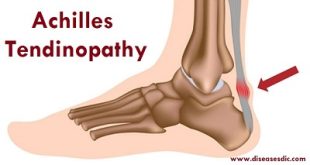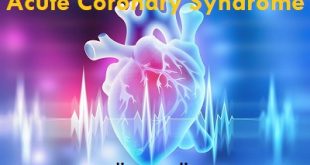Introduction
Adenoviruses (Adenovirus infection) are a group of common viruses that infect the lining of your eyes, airways and lungs, intestines, urinary tract, and nervous system. They’re common causes of fever, coughs, sore throats, diarrhea, and pink eye.
Infections happen in children more often than in adults, but anyone can get them. Most kids will have at least one type of adenovirus infection by the time they’re 10.
The infections usually cause only mild symptoms and get better on their own in a few days. But they can be more serious in people with weak immune systems, especially children.
Pathophysiology of adenovirus infection
Adenovirus is a double-stranded DNA virus that measures 70-90 nm and that has an icosahedral capsid.
The site of entry generally determines the site of infection; respiratory tract infection infections result from droplet inhalation, while gastrointestinal tract involvement results from the fecal-oral transmission. Upon infection with adenovirus, one of three different interactions with the cells may occur.
The first is a lytic infection, which occurs when an adenovirus enters human epithelial cells and continues through an entire replication cycle, which results in cytolysis, cytokine production, and induction of host inflammatory response.
The second is a chronic or latent infection, the exact mechanism of which is unknown, which frequently involves asymptomatic infection of lymphoid tissue.
Lastly, an oncogenic transformation has been observed in rats. During oncogenesis, the replication cycle is truncated, and adenoviral DNA is then integrated into the host cell’s DNA. Thereafter, adenovirus produces potent E1A proteins that immortalize primary rodent cells by altering cellular transcription, ultimately leading to the deregulation of apoptosis and malignant transformation.
Causes of adenovirus infection
The infection is caused by a type of virus called an adenovirus. There are several types of these viruses. The infection passes easily from person to person but is rarely serious.
Risk factors
These infections are common in children. Other factors that may increase your chance of an adenovirus infection:
- Weak immune system
- Exposure to a sneeze or cough of an infected person
- Exposure to the stool of an infected person
- Living in close contact with others such as military units, schools, or summer camps
- Handling an object that was exposed to an infected person
- Exposure to water contaminated with adenovirus
How is adenovirus infection spread?
Adenoviruses are spread like the common cold. The viruses can be spread from person to person via coughing or sneezing. People may also become infected by touching something with adenovirus on it and then touching their mouth, nose, or eyes. For example, adenoviruses can be transferred to a doorknob when an infected person sneezes into his/her hands and then touches the doorknob before washing. Germs can also be spread if an infected person sneezes or coughs onto tabletops or other items that might be touched by other people. To prevent the spread of disease, it is important to practice good health habits.
Incubation period
The incubation period is usually 2 – 14 days.
Symptoms of adenovirus infection
Adenoviruses can cause a wide range of illnesses such as
- Common cold or flu-like symptoms
- Fever
- Sore throat
- Acute bronchitis (inflammation of the airways of the lungs, sometimes called a “chest cold”)
- Pneumonia (infection of the lungs)
- Pink eye (conjunctivitis)
- Acute gastroenteritis (inflammation of the stomach or intestines causing diarrhea, vomiting, nausea and stomach pain)
Less common symptoms of adenovirus infection include
- Bladder inflammation or infection Adenoviruses can cause a wide range of illnesses such as
- Common cold or flu-like symptoms
- Fever
- Sore throat
- Acute Bronchitis (inflammation of the airways of the lungs, sometimes called a “chest cold”)
- Pneumonia (infection of the lungs)
- Pink Eye (conjunctivitis)
- Acute Gastroenteritis (inflammation of the stomach or intestines causing diarrhea, vomiting, nausea and stomach pain)
- Less common symptoms of adenovirus infection include
- Bladder inflammation or infection
- Neurologic disease (conditions that affect the brain and spinal cord)
What are the possible complications of adenovirus infection in a child?
Possible complications include:
- Chronic lung disease. In very rare cases, a child who gets pneumonia from adenovirus may develop chronic lung disease.
- Severe infection. A child with a weak immune system is at risk for more severe infection from adenoviruses.
- This is when one part of the intestine slides over another section like a telescope. It causes intestinal blockage. It most often occurs in babies. This is a medical emergency. The symptoms can include bloody stool, vomiting, abdominal swelling, knees flexed to chest, loud cries from pain, weakness, and lack of energy.
Diagnosis
Your child’s doctor may want to do a physical exam and possibly one or more of these tests to see if a virus or bacteria causing the infection:
- Blood test: A nurse will take a sample of your child’s blood from a vein in his arm.
- Urine test: Your child will pee in a cup the nurse gives you.
- Swab test: A nurse will use a cotton swab to get a sample of mucus from your child’s nose.
- Stool test: You’ll collect a sample of your child’s poop at home and bring it to the doctor’s office.
- Chest X-ray: Your child will lie still while a technician uses a small amount of radiation to take pictures of the inside of her chest. This will give your child’s doctor a closer look at her heart and lungs
What is the treatment for adenovirus infections?
There is no cure for adenovirus infections. If a child is infected, treatment is supportive and is focused on relieving the symptoms associated with the infection. Because the infection is caused by a virus, antibiotics are not effective. Specific treatment for adenovirus infections will be determined by your child’s doctor based on:
- Your child’s age, overall health, and medical history
- The extent of the condition
- Your child’s tolerance for specific medications, procedures, or therapies
- Expectations for the course of the condition
- Your opinion or preference
Treatment for respiratory infection may include:
- Increased fluid intake. Keeping your child well-hydrated by encouraging fluids by mouth is important. If necessary, an intravenous (IV) line may be started to give your child fluids and essential electrolytes.
- Bronchodilator medications. Bronchodilator medications may be used to open your child’s airways. These medications are often administered in an aerosol mist by a mask or through an inhaler.
- Supplemental oxygen through a mask, nasal prongs, or an oxygen tent
- Mechanical ventilation. A child who becomes very ill with adenovirus may require mechanical ventilation or a respirator to assist with breathing for a period of time.
Treatment for intestinal infection may include:
- Oral rehydration. Oral rehydration with water, formula, breast milk and/or special electrolyte-containing fluids (fluids containing sugars and salts), such as Pedialyte, is important. Very young children should NOT be rehydrated with soda, juices, or sports drinks.
Continue feeding your child solid foods if they are able to tolerate them. Some children may develop severe enough dehydration to require hospitalization. For these children, treatment may include:
- Administration of intravenous (IV) fluids
- Nasogastric (NG) tube feedings. A small tube is placed into your child’s stomach through the nose so that formula or fluids may be administered.
- Blood work. This is done to measure your child’s electrolyte levels–sugar, salt, and other chemicals in the blood.
How can adenovirus infection be prevented?
- The first line of prevention is frequent hand washing (good hand hygiene).
- Avoid touching your eyes, nose, and mouth with unwashed hands. Disinfection of fomites [fo-mites] (clothes, utensils, and furniture) is difficult as the virus is resistant to many disinfectants.
- Clean surfaces with heat or bleach-containing products.
- People who have an infection and are in the hospital need to be in isolation. You should try to avoid close contact with those who are sick.
- Anyone who is ill with the virus should stay home and avoid spreading the infection further.
- Virus shedding (released from the body) can continue for days to weeks even after the person recovers from the acute illness, therefore those who were infected can still spread to others even when they appear well.
 Diseases Treatments Dictionary This is complete solution to read all diseases treatments Which covers Prevention, Causes, Symptoms, Medical Terms, Drugs, Prescription, Natural Remedies with cures and Treatments. Most of the common diseases were listed in names, split with categories.
Diseases Treatments Dictionary This is complete solution to read all diseases treatments Which covers Prevention, Causes, Symptoms, Medical Terms, Drugs, Prescription, Natural Remedies with cures and Treatments. Most of the common diseases were listed in names, split with categories.








This is caused by EMF radiation. It flips ions to positive in ionosphere. NOT GOOD FOR HUMANS